How to Strap Two Kayaks to a Roof Rack
An unfortunate number of kayak-related accidents actually occur far from the water. Improperly securing kayaks to a vehicle can cause significant danger to your kayaks, as well as other drivers on the road behind you.
If you have a vehicle that doesn't have a roof rack, transporting your kayaks will be an even bigger challenge. We're not saying that it's impossible, but you'll need to take extra precautions to ensure that everything is secured properly.
In this article, we'll cover everything you need to know when considering how to transport two kayaks without a roof rack. We'll also provide some basic rules for kayak transportation that everyone (no matter your transportation method) should follow!
Table of Contents
- 1 Basic Rules Of Kayak Transportation
- 1.1 Use Cam Straps Over Ratchet Straps
- 1.2 Don't Overtighten Straps
- 1.3 Double-Check Everything
- 1.4 Learn How To Make a Daisy-Chain
- 2 How To Transport 2 Kayaks Without A Roof Rack
- 2.1 Method #1: Pool Noodles
- 2.2 Method #2: Foam Blocks
- 3 Our Pick – The Pool Noodle Method
- 4 Why It's Great To Get A Roof Rack
- 5 Final Thoughts
Basic Rules Of Kayak Transportation
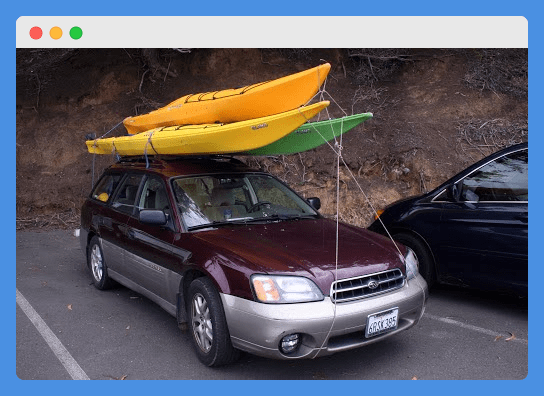
No matter whether you transport your kayaks in the back of a truck, on a trailer, on a roof rack on top of your car, or any other way, these are some basic rules of kayak transportation that everyone should follow.
Use Cam Straps Over Ratchet Straps
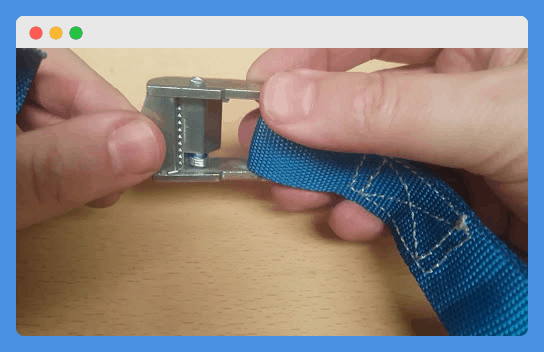
Many people like ratchet straps because they're easier to make super tight. But transporting kayaks doesn't require tightening your straps to the same extent as you'd need to when transporting other materials.
We recommend always using cam straps over ratchet straps when transporting kayaks. They're easier to use and have fewer components that could break when subject to high winds on the road.
Cam straps are also super durable and known to last for years of transporting kayaks. If you do happen to see any fraying along the edges of a well-used cam strap, however, that's your sign that it should be retired.
Don't Overtighten Straps
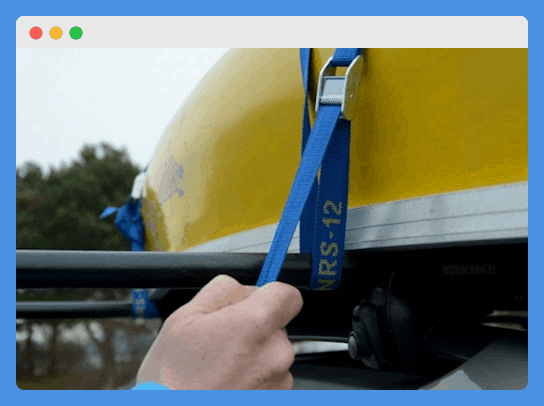
Many beginners make the mistake of overtightening the cam straps they use when securing a kayak for transportation. Your straps actually don't need to be overtightened but should be secure enough so that your kayak can't slide forward or backward at all.
In some cases, your kayak will still be able to lift up minimally once your straps are tightened.
If you're securing kayaks to a roof rack, this is natural and actually allows you kayak to bounce ever so slightly on the rack without risking damage to the rack, your kayak, or your cam straps.
When strapping a kayak to a car without a roof rack, however, you'll probably want to make sure your kayak can't be lifted at all before driving.
We'll go over some additional steps you can take to make sure this happens later on, but here's a hint: it doesn't involve overtightening your cam straps!
Double-Check Everything

You can never be too sure that your kayaks are properly secured before you begin to drive away. As a general rule, always double-check the security of your straps before you get on the road.
If you do happen to strap your kayaks to a roof rack, you should also check to make sure the rack is secure and tightened down before driving. Even if your rack has been on your car for years, a quick check before driving is always a healthy practice.
In the best-case scenario, you'll have a paddle partner with you who can also double-check your work. If you tightened certain straps and your partner tightened the rest, make sure to double-check each others' work before you start driving.
Learn How To Make a Daisy-Chain
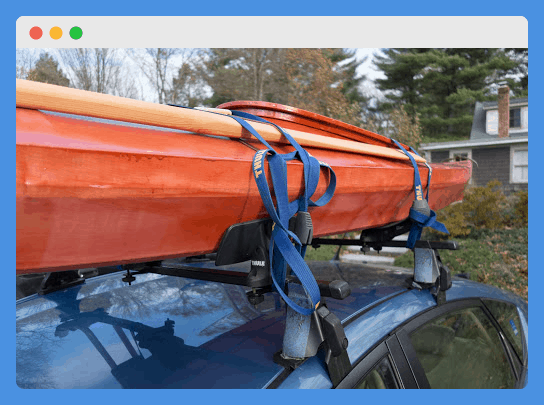
Depending on the length of the cam straps you're using, you'll likely have excess strap once you tighten them down.
This excess should never be left to flap in the wind because this can cause damage to your kayak or the strap itself and it also just looks like you haven't taken the extra step to make sure everything is secure.
Learning how to make a daisy chain is one of the best ways to reduce the excess strap and make it easier to tuck everything in so that nothing is left flapping in the wind. Here's a great video detailing how to make a daisy chain.
This is a relatively simple process, but it also serves the secondary purpose of increasing the lifespan of your straps. While they aren't the most expensive kayak accessory, why wouldn't you take care of them so that they last?
How To Transport 2 Kayaks Without A Roof Rack
Okay, so now that you're familiar with several basic rules of kayak transportation, it's time to get into the nitty-gritty of how to transport 2 kayaks without a roof rack.
There are two basic methods we'll cover in this section: using pool noodles and using foam blocks.
In the interest of keeping things organized, we're going to start by assembling all the necessary gear for each method and then move through the nuances of setting up and securing your kayaks on the roof of your car using these two popular techniques.
Method #1: Pool Noodles
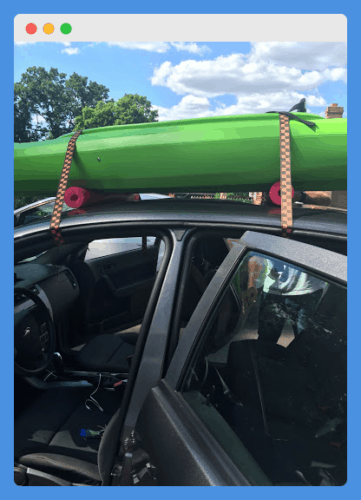
The first method will cover involves using pool noodles to provide padding for the top of your car. As you might imagine, this can be a very affordable method for transporting 2 kayaks without a roof rack.
What You'll Need
In order to make this method work, you'll need two full-sized pool noodles that are at least 3 to 3.5 inches thick. You'll also need aluminum or stainless steel poles that will reinforce the pool noodles and at least four cam straps for securing the kayaks.
Your cam straps should ideally be 20 feet long at minimum, but longer can be better. Other optional items include bungee cord and enough rope to tie the bow and stern of your kayak down to the front and rear bumpers of your vehicle.
How To Set It Up
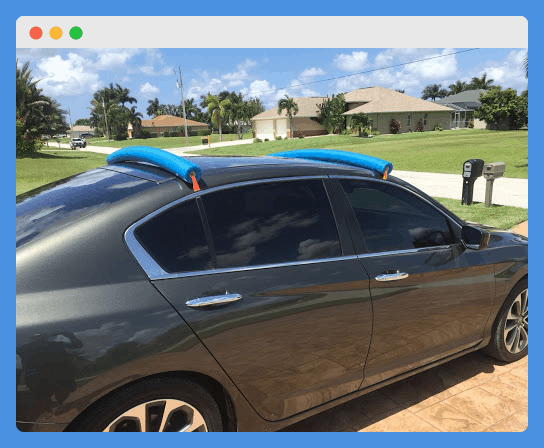
To set up this method, start by measuring the width of the top of your car and comparing that to the length of your pool noodles. Ideally, your pool noodles are a little shorter than the width of your vehicle so that they don't stick out on either side.
That being said, they still need to be wide enough for two kayaks to fit on top of them side-by-side. So make sure you measure the width of your kayaks before you settle on the final length of the pool noodles you'll use to transport them.
Next, you'll want to thread your cam straps through the pool noodles so that there's an even amount of strap coming out of each end. From there, you can also insert your aluminum or stainless steel tubing through the noodles.
The advantage of this method is that you can make the aluminum or stainless steel tubing is a few inches longer than the width of your vehicle. This extra length is what will allow you to safely transport two kayaks face down with this method.
Before securing your pool noodles on top of your vehicle, check to make sure they're not too far apart. As a good rule-of-thumb, you'll want anywhere from 24 to 48 inches between your noodles, but this depends on the length of your car and the length of your kayak.
If you want a better idea of how far apart to place your pool noodles, measure your kayak from about 4-6 inches in front of the cockpit to about 4-6 inches behind the cockpit. This will give you a better idea of where the kayak will sit on the pool noodles once you place it on top of your vehicle.
Once your noodles are set in your desired locations, you can open your car doors and run the straps underneath the roof. You'll want to tighten your straps enough so that you can't slide your racks forward, backward, or sideways on your roof.
How To Secure 2 Kayaks Using This Method
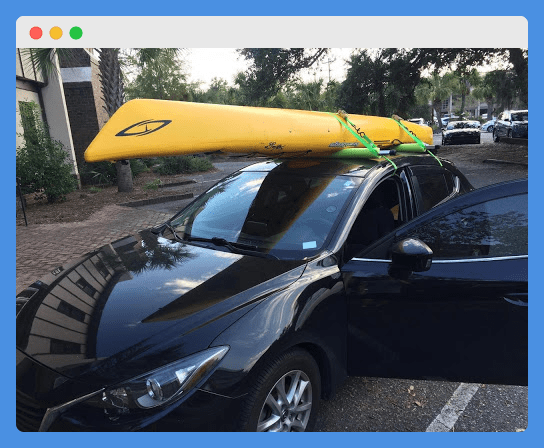
Once your pool noodles are in place, you can set your kayaks on top of them. You should flip both kayaks over so that they are facing cockpit down before lifting them and placing them gently on the pool noodles.
If you're by yourself and you're having trouble lifting your kayaks up high enough to place them on your roof, check out our tips for how to lift a kayak onto a roof rack as a solo paddler!
Make sure your kayaks are centered on your racks by checking that the cockpit is aligned between your two pool noodles. Now you're ready to tie your kayaks down!
Run two more cam straps up and over the top of your kayak in roughly the same places that your pool noodles are located. These straps will then run back through the inside of your vehicle and secure everything to your roof, so make sure your doors are open before you take this step.
As a final precaution for those of you with short vehicles or really long kayaks, use a rope to tie the bow and stern down to your front and rear bumpers, respectively.
Your kayak's toggle handles are a great upper anchor point and many cars have hooks underneath the bumper that provide a perfect lower anchor point for your rope.
To make your life easier, secure the rope to the lower anchor point before running it up and through the upper anchor point and tightening it down.
This will make it easier to pull the rope tight and secure it at somewhere close to head height once you have tension on the rope.
Method #2: Foam Blocks
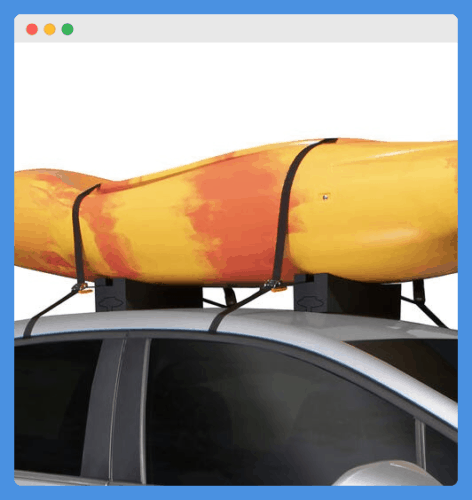
Our second method uses a lot of the same techniques as the first but, instead of pool noodles, it relies on foam blocks. Because many of these foam blocks are specifically manufactured for this purpose, this method can be slightly more expensive than the first.
What You'll Need
To make this method work for you, you'll need to start with two sets of foam blocks with a minimum size of 20 inches long by four inches wide by four inches high.
If you want to successfully transport two kayaks with these blocks, you'll need to make sure that the two sets of blocks won't be wider than the width of your vehicle.
While you can choose blocks that are perfectly rectangular in shape, the best blocks for this application have a depression or V-shape in the middle. This is because they'll allow you to set two kayaks on their sides and secure everything down.
Some foam blocks even come with a slit or space where you can insert a cam strap along the length of the block. This is not 100% necessary for this solution, but it does provide added security if you can find blocks of that design.
On top of your blocks, you'll also need a total of at least four cam straps that are at least 20 feet in length each. If you can get six, that's even better, but you can also use a bungee cord or rope to provide added security at the end of this method.
How To Set It Up
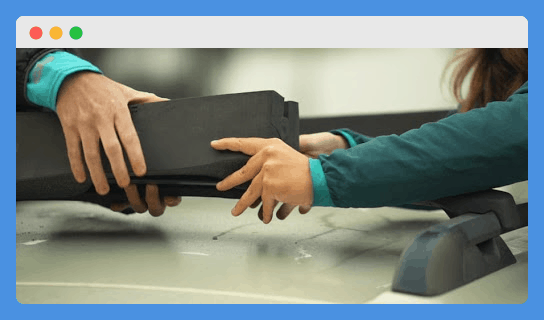
The setup is pretty simple for this method and it starts with placing the foam blocks on top of your car at an appropriate distance apart from each other.
Just like with the pool noodle solution, measure the distance from the front to the back of your kayak's cockpit can give you a good idea of how far apart your blocks should be.
From there, it's time to set your kayaks on the blocks and get ready to strap them down. If you opted for rectangular blocks, make sure to place your kayaks face down on them.
But if you went with V-shaped blocks, they are designed for your kayaks to be transported on their side with the hulls facing in towards each other.
How To Secure 2 Kayaks Using This Method
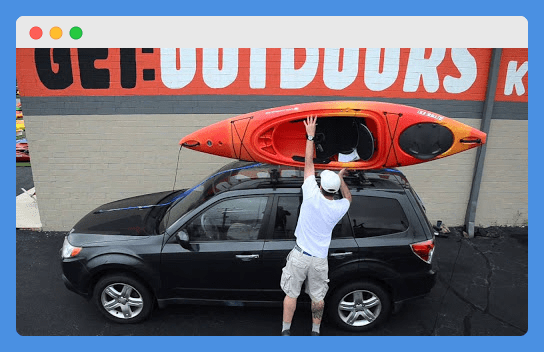
Once your kayaks are on top of your blocks, throw two cam straps over the top of your kayaks at roughly the same locations where the blocks are underneath. Make sure your car doors are open and secure the straps inside the body of your vehicle.
Check to make sure your kayaks don't move forward, backward, or sideways once you have this first pair of straps in place. If you're satisfied, then you can move on to tying the bow and stern down to the front and rear bumpers of your vehicle, respectively.
When securing the bow and stern down, you can always use more cam straps if you have them on hand (and they're long enough). But you can also use bungee cords or a rope with a minimum ¼-inch thickness.
Make sure to secure the rope, strap, or bungee cord to a metal anchor point under your bumper but attached to the frame of your vehicle.
While you'll sometimes get away with tying down to the bumper itself, this is never as secure as finding a welded anchor point on the frame of your vehicle.
Our Pick – The Pool Noodle Method
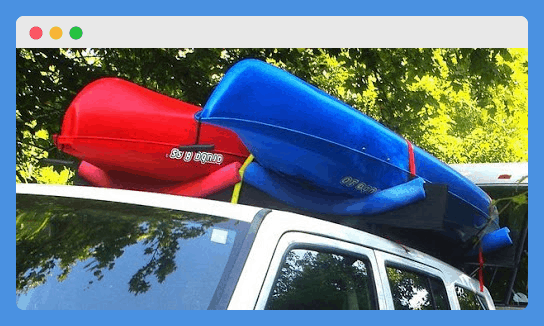
While the foam block method will certainly work for cars without a roof rack, our pick for the better method for transporting two kayaks without a roof rack is the pool noodle method.
When using this method to transport 2 kayaks, we definitely recommend using aluminum or stainless steel tubing to reinforce the pool noodles. Taking this approach will also give you the added width you'll need to safely get two kayaks up there face down.
Additionally, this method makes it easier to leave the rack in place once you take your kayaks off. So it can help you have a more permanent kayak transportation solution without a roof rack for a whole paddling season!
Why It's Great To Get A Roof Rack
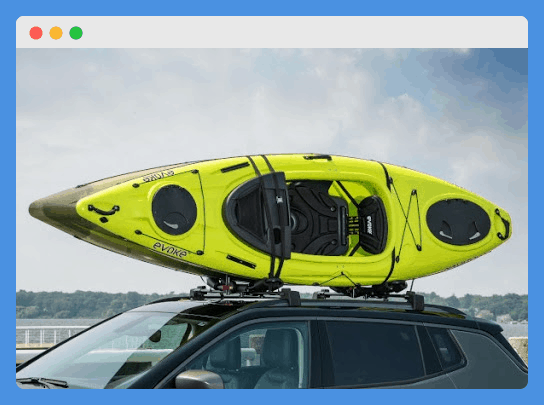
That being said, a quality kayak roof rack is going to make transporting your boats easier and safer. And as you gain experience and consider upgrading your kayak, there's even more of a need to invest in a rack that guarantees the safety of your investment while in transit.
The best kayak roof racks are adaptable to many different vehicles and they provide an easy way to strap multiple kayaks down.
Fortunately, there are also great roof racks for cars without rails that allow you to transport kayaks over both short or long distances.
You should be careful to select a roof rack that's compatible with your specific vehicle. While this is usually easier if you're going with a cheaper universal model, most higher-end racks are specifically designed for different vehicles.
If you want to check out your options for different roof racks, we suggest reading through our article on how to transport a kayak. In that article, we provide more tips for transporting kayaks and suggestions for racks according to vehicle type.
Final Thoughts
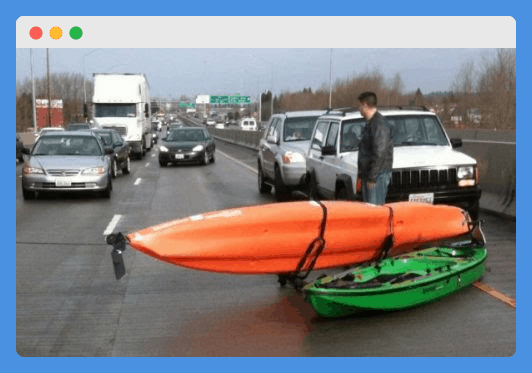
If you don't want to cause a traffic jam or worse (see photo above) when transporting your kayaks, it's essential to know how to secure them properly to your vehicle.
This requires even more diligence if you're transporting 2 kayaks without a roof rack.
Our final thought on this topic is to take transporting your kayaks as seriously as you take preparing for a safe experience once you're on the water. The vast majority of kayak-related accidents actually occur in transit, so this is nothing to take lightly!

Author: Peter Salisbury Pete is the Owner of KayakHelp.com. Born and raised in Cleveland, Ohio, he grew up kayaking, fishing, sailing, and partaking in outdoor adventures around the Great Lakes. When he's not out on the water, you can find him skiing in the mountains, reading his favorite books, and spending time with his family.
How to Strap Two Kayaks to a Roof Rack
Source: https://www.kayakhelp.com/how-to-transport-2-kayaks-without-a-roof-rack/